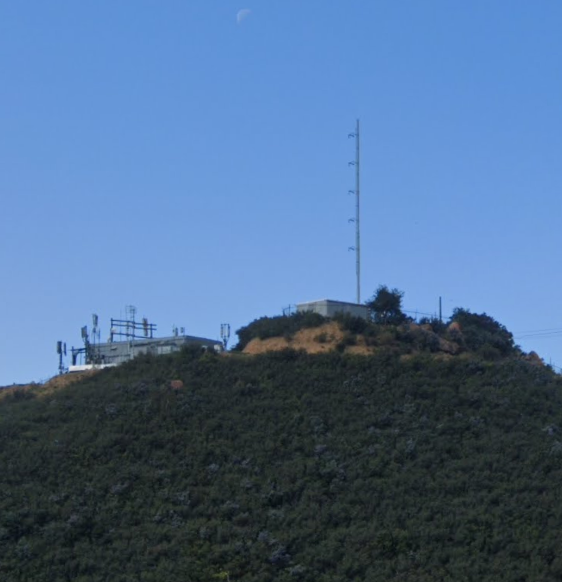SAN LUIS OBISPO, CALIF. — If you’ve ever spent time in Santa Barbara, a 90-minute drive south of the wineries and hills surrounding the city of San Luis Obispo, you’ll know that tuning to FM signals that share the same frequency as a station based in distant San Diego or in Baja California, Mexico is not an easy task.
For years, tropospheric ducting has made life challenging for Class A facilities such as Alternative KJEE-FM at 92.9 MHz, and even Class B KDSC-FM at 91.1 MHz in Thousand Oaks, which uses an Ojai transmitter and according to contour maps is supposed to have city-grade coverage of Santa Barbara. In reality, XHFZO “Amor Mio” — a station with a focus on Ensenada and Rosarito — can be heard in higher elevations of Santa Barbara County. Instead of KDSC, it is Local Media San Diego’s XETRA “91X.”
Then, there is 89.5 MHz. With just 50 watts, Central Coast Public Radio has attempted to serve Santa Barbara with its unique blend of Americana music in morning drive, along with NPR spoken word programming. But, its same-signal status with the main NPR station serving San Diego has been regularly problematic. Now, Central Coast Public Radio is giving up the fight.
Since 1983, KCBX-FM in San Luis Obispo has also served Santa Barbara, through KSBX-FM, presently a tiny FM facility.
As Central Coast Public Radio sees it, “A change in atmospheric conditions caused by climate change has created a frequency interference with our fellow NPR member station KPBS in San Diego, about 200 miles away.”
Central Coast Public Radio did not substantiate its climate change reasoning for the tropospheric ducting — a phenomenon that listeners in Los Angeles’ Westside communities have experienced for decades, making “91X” easily listenable at UCLA until a Mt. Wilson FM translator signed on the air.
That said, tropospheric ducting has traditionally been limited to months where a marine layer is common across Southern California, hence the “June gloom” seen from Laguna Beach to Goleta on some summer days. Today, it is more common, and as such has likely caused greater frustrations for Central Coast Public Radio.
KCBX President/General Manager Frank Lanzone emphasized that KPBS-FM 89.5, a 26kw Class B serving San Diego, is not creating the problem.
“To be clear, this is not a problem that KPBS can fix, and it is not an intentional effort by them to break into the Santa Barbara radio market,” Lanzone said. “This is a climate change issue.”
While the issue of climate change may be open to debate, what is 100% factual is that KPBS’s signal is much larger than that of KSBX.

As shown above, KSBX during “normal” weather patterns has a signal designed to cover the city of Santa Barbara, using a facility from a hill above it but at a lower altitude than more high-powered stations including KTYD-FM 99.9 — a station that, thanks to tropospheric ducting, can reach locales such as Manhattan Beach if the weather and terrain is just right.
The KPBS signal contour, shown below, does not take into account the Pacific Ocean as a factor; it uses a common tower atop Mt. Soledad in La Jolla, known for its scenic views and northwest view, with Santa Barbara hundreds of miles in the distance.

For listeners who have tuned to KSBX, Lanzone is pointing them to streaming options. For those in North Santa Barbara County, 10-watt FM translator K215AG at 90.9 MHz will continue to serve Solvang, Santa Ynez and El Capitan State Beach.
While listeners to the 9am-Noon Morning Cup, and the 1pm hour 30-minute shows Bioneers and IdeaSphere in Santa Barbara will certainly be at a loss without an FM signal, those that seek to listen to signature NPR programs Morning Edition and All Things Considered have multiple choices, including KCRW simulcast partner KDRW-FM; an FM translator rebroadcasting KPCC-FM in Los Angeles; and KCLU-AM 1340 in Santa Barbara, a NPR Member station owned by California Lutheran University with an FM translator at 102.3 MHz.
Given the competition for public radio listeners in Santa Barbara, perhaps the highest for any U.S. market, KSBX’s underwriting and donor growth opportunities could have been limited, regardless of the reception issues that have increased.
Furthermore, KCBX and simulcast partner KNBX-FM 91.7 in San Ardo have traditionally combined to superserve San Luis Obispo County and southern Monterey County, much in the same manner Gray Television’s KSBY-6 in San Luis Obispo dominates those areas due to traditional geographical allegiances — even though San Luis Obispo and Santa Barbara were placed in the same Nielsen DMA.
Yet, Lanzone is committed to Santa Barbara, and hopes listeners continue to listen to KCBX programming via a smart speaker or smartphone app, or even via a desktop computer. “KCBX considers Santa Barbara an integral part of our listenership, and we have no plans to reduce or limit news coverage or reporting on local Santa Barbara events and happenings,” he said. “As a Central Coast public radio station, we consider Santa Barbara residents part of our KCBX family.”





